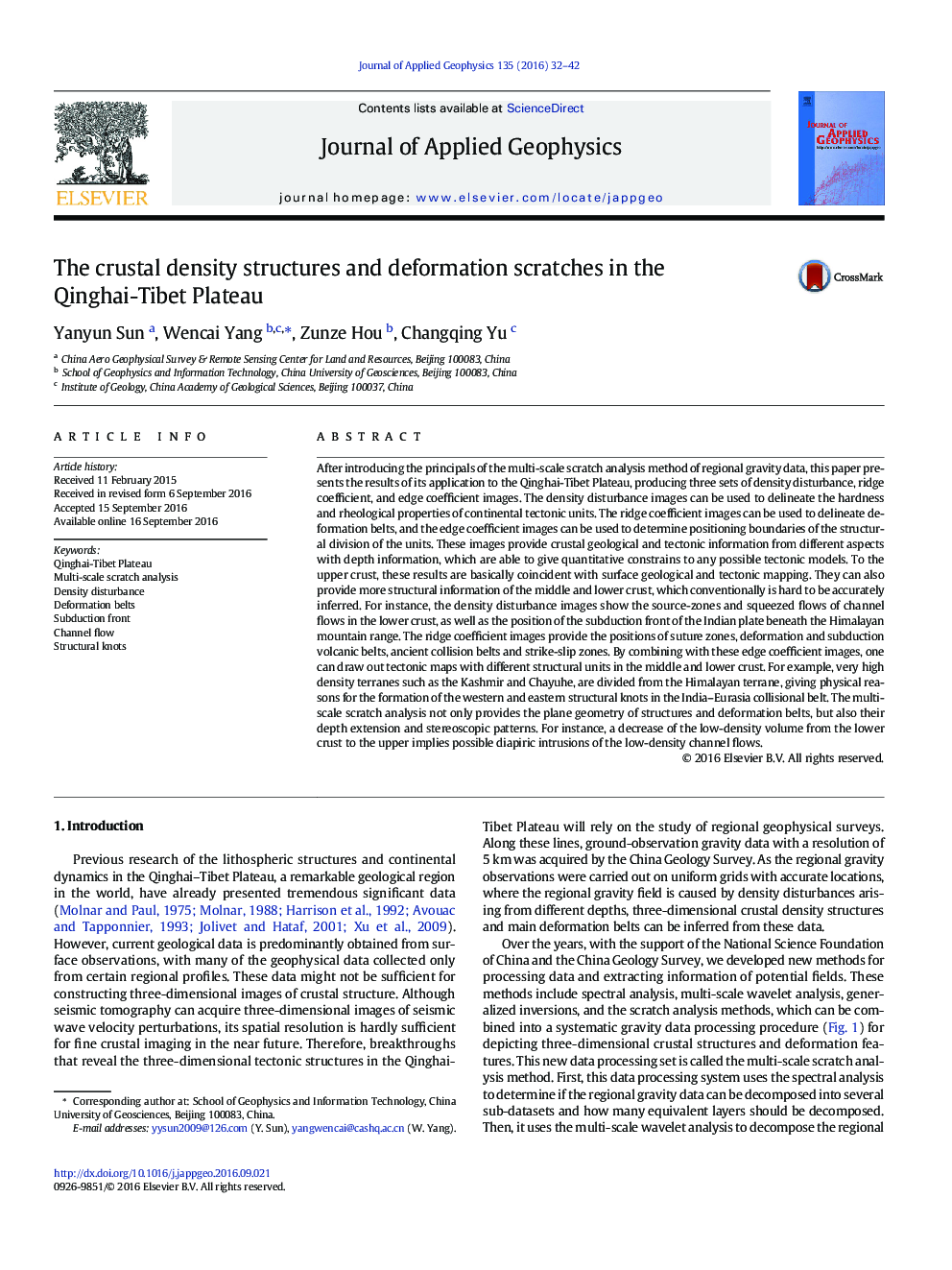| کد مقاله | کد نشریه | سال انتشار | مقاله انگلیسی | نسخه تمام متن |
|---|---|---|---|---|
| 4739688 | 1641116 | 2016 | 11 صفحه PDF | دانلود رایگان |

• We develop new method for depicting crustal 3-D structures and deformation belts.
• We provide maps of crustal density and deformation belts at different depths.
• Upper crustal maps coincide with surface geological structures.
• Middle and lower crustal maps offer information unidentified by surface observations.
• Strong low density disturbance reflect lower crustal channel flows.
After introducing the principals of the multi-scale scratch analysis method of regional gravity data, this paper presents the results of its application to the Qinghai-Tibet Plateau, producing three sets of density disturbance, ridge coefficient, and edge coefficient images. The density disturbance images can be used to delineate the hardness and rheological properties of continental tectonic units. The ridge coefficient images can be used to delineate deformation belts, and the edge coefficient images can be used to determine positioning boundaries of the structural division of the units. These images provide crustal geological and tectonic information from different aspects with depth information, which are able to give quantitative constrains to any possible tectonic models. To the upper crust, these results are basically coincident with surface geological and tectonic mapping. They can also provide more structural information of the middle and lower crust, which conventionally is hard to be accurately inferred. For instance, the density disturbance images show the source-zones and squeezed flows of channel flows in the lower crust, as well as the position of the subduction front of the Indian plate beneath the Himalayan mountain range. The ridge coefficient images provide the positions of suture zones, deformation and subduction volcanic belts, ancient collision belts and strike-slip zones. By combining with these edge coefficient images, one can draw out tectonic maps with different structural units in the middle and lower crust. For example, very high density terranes such as the Kashmir and Chayuhe, are divided from the Himalayan terrane, giving physical reasons for the formation of the western and eastern structural knots in the India–Eurasia collisional belt. The multi-scale scratch analysis not only provides the plane geometry of structures and deformation belts, but also their depth extension and stereoscopic patterns. For instance, a decrease of the low-density volume from the lower crust to the upper implies possible diapiric intrusions of the low-density channel flows.
Journal: Journal of Applied Geophysics - Volume 135, December 2016, Pages 32–42